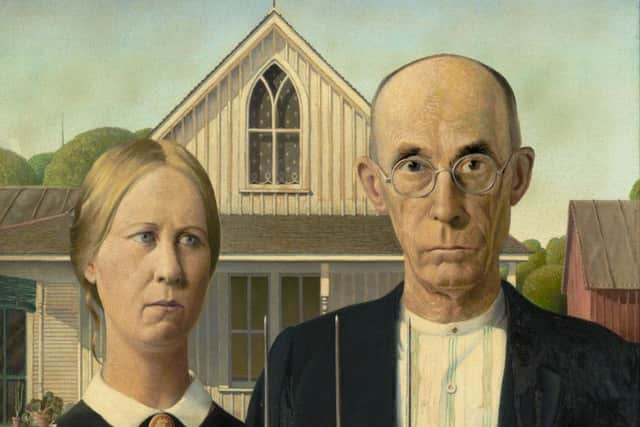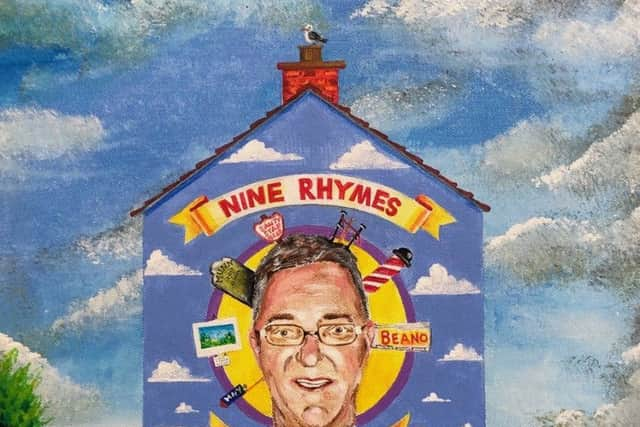Terrible truth about gulpins anda rhyming tale of marital woe


Meanwhile I’ve been loitering on the side-lines, eavesdropping while folk here and around the globe share their beloved lingo on his popular Facebook page.
There’ll be more from his book here in a moment, but first to ‘gulpin’, which was Laim’s ‘Word o the Week’ at the end of last month.
Advertisement
Hide AdAdvertisement
Hide AdI mentioned the word ‘clatter’ a fortnight ago, meaning ‘noise’ in colloquial English and ‘many’ in Ulster Scots.


Every week Liam selects similarly vibrant expressions, outlining their often varied translations, origins and contexts.
Some of his linguistic revelations are truly inspirational.
For most of us, a ‘hut’ is a small and/or rustic shelter, usually made of wood or maybe corrugated iron.
Likewise in Ulster Scots, but with two additional, rather quaint connotations, outlined in ‘Word o the Week’ in August.


Advertisement
Hide AdAdvertisement
Hide AdIn days of yore, after hay or straw was cut, turned and dried in the field, it was made into ‘stooks’ where the little sheaves were trussed together vertically to dry in the breeze. Something like modern underfloor ventilation systems, without the ducts, fans and clatter.
When they were sufficiently dry, or if rain threatened, the stooks were dismantled and piled into cone-shaped stacks commonly known as ‘huts’ - a process called ‘huttin’. Liam offers a second less endearing meaning!
“It equates, in greater and lesser degrees, to the standard English word ‘hit’ and might be used in phrases such as ‘I hut him a slap in the bake’ meaning ‘I disagreed so vehemently with his position that I had to remove all doubt from his mind’ or ‘I gave him a punch in the mouth for his inappropriate vocal interventions.’”
(Please don’t try this at home without prior arbitration, adequate supervision and a working knowledge of the Health and Safety regulations!)
Advertisement
Hide AdAdvertisement
Hide AdThough I’ve never encountered it, Pokémon’s Gulpin is apparently a curious green, shapeless creature with a black diamond marking on its back and a yellow feather on its head.
“The Ulster Scots ‘gulpin’ isn’t!” Liam accentuated in ‘Word o the Week’ at the end of September.
“I am almost sure,” he added “that I have made you aware of the preponderance of insults and the shortage of compliments in the Hamely Tongue?”
It’s therefore not surprising that calling someone a ‘gulpin’ isn’t an accolade!
Advertisement
Hide AdAdvertisement
Hide Ad“A ‘gulpin’ is a nitwit, a fool, an impressionable idiot,” Liam continued, adding “as a general rule, a ‘gulpin’ tends to be youngish and in the main ‘gulpins’ tend to be drawn from the male end of the gender spectrum.”
While confirming the rarity of female ‘gulpins’ he conceded “the odd appearance”.
While they’re generally young “it is possible to be an older ‘gulpin’ where a complete lack of knowledge and an absence of sense are essential prerequisites.”
We can learn a lot from Liam’s ‘gulpins’ which he characterises as believing all they hear “either heeding the loudest voice or being the loudest voice. They have an unswerving belief in their own abilities, abilities which we cannot see. Their lack of wit is obvious to all but the ‘gulpin’. They tend to hunt in packs, self-reinforcing packs who can readily confirm each other’s cleverness.”
Advertisement
Hide AdAdvertisement
Hide AdApparently the word itself comes via Scots from medieval French, but more than a few words in ‘Nine Rhymes’ have originations in some of our more ubiquitous, home-grown conversations!
It’s currently Brexit, but second only to the weather our shared ailments are usually what we talk most about!
“The heid yin o the doctors spoke, says he, it isnae guid.
Nae doot he haes a serious condition.
Tae dae wae circulation an the workin o haes hert
But I’m glad tae sae there micht be a solution.”
Albert is an Antrim farmer in the final of Liam’s nine wonderful rhymes called The Cure.
Artist Billy Mawhinney’s illustration of Albert and his wife is strongly reminiscent of American painter Grant Wood’s iconic 1930s painting of a farming couple from Iowa entitled ‘American Gothic’.
Advertisement
Hide AdAdvertisement
Hide AdWood’s grim-faced pair are posing in front of their typical wooden farmhouse built in a style called Carpenter Gothic with a distinctive upstairs window.
His bespectacled farmer is holding a pitchfork.
Albert took ill, fell in a field and still wearing his glasses was taken to A&E by his wife.
The doctors told her that he’d recover “if she sees tae aal haes needs.”
They said that he must rest in bed and take his tablets.
“He’s food for worms unless it’s tuk in han,” the doctors added “yer gan tae hae tae stan beside yer man.”
Advertisement
Hide AdAdvertisement
Hide AdAlbert’s wife brought him home from the hospital to their typical Ulster farmhouse and confined him to his bed.
“She spoke gye soft and whispered ‘the doctor says yer ill.
Yer gan tae hae tae luk me in the eye.
There’s isnae cure nor treatment, nae medicine or pill
We hae tae face the facts, yer gan tae die.’”
Lying through her teeth about his impending doom, the illustration depicts Albert’s wife firmly clutching his will!
Published by Galdanagh Press (£9.99) Liam Logan’s Nine Rhymes is available from local bookshops and Amazon.